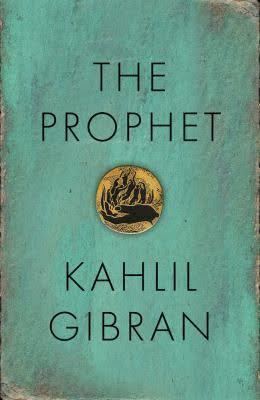9 /10 1 Votes9
4.7/5 Barnes & Noble Country United States Media type Book Originally published 1923 Original language English | 4.2/5 Goodreads Publication date 1923 Pages 107 Page count 107 Publisher Alfred A. Knopf | |||||||||||||||||||||||||||||||||
 | ||||||||||||||||||||||||||||||||||
Similar Works by Kahlil Gibran, Poetry books | ||||||||||||||||||||||||||||||||||
The Prophet is a book of 26 prose poetry fables written in English by the Lebanese-American artist, philosopher and writer Kahlil Gibran. It was originally published in 1923 by Alfred A. Knopf. It is Gibran's best known work. The Prophet has been translated into over 40 different languages and has never been out of print.
Contents
Synopsis
The prophet, Almustafa, has lived in the foreign city of Orphalese for 12 years and is about to board a ship which will carry him home. He is stopped by a group of people, with whom he discusses topics such as life and the human condition. The book is divided into chapters dealing with love, marriage, children, giving, eating and drinking, work, joy and sorrow, houses, clothes, buying and selling, crime and punishment, laws, freedom, reason and passion, pain, self-knowledge, teaching, friendship, talking, time, good and evil, prayer, pleasure, beauty, religion, and death.
Popularity
The Prophet has been translated into well over 40 languages. By 2012, it had sold more than nine million copies in its American edition alone since its original publication in 1923.
Of an ambitious first printing of 2,000 in 1923, Knopf sold 1,159 copies. The demand for The Prophet doubled the following year — and doubled again the year after that. Since then, annual sales have risen steadily: from 12,000 in 1935 to 111,000 in 1961 to 240,000 in 1965. The book sold its one millionth copy in 1957. At one point, The Prophet sold more than 5000 copies a week worldwide.
Inspiration
Though born a Maronite, he was influenced not only by his own religion but also by Islam, and especially by the mysticism of the Sufis. His knowledge of Lebanon's bloody history, with its destructive factional struggles, strengthened his belief in the fundamental unity of religions, which his parents exemplified by welcoming people of various religions in their home. Connections and parallels have also been made to William Blake's work, as well as the theological ideas of Walt Whitman and in Ralph Waldo Emerson such as reincarnation and the Over-soul. Themes of influence in his work were Islamic/Arabic art, European Classicism (particularly Leonardo Da Vinci) and Romanticism (Blake and Auguste Rodin), the pre-Raphelite Brotherhood, and more modern symbolism and surrealism.
Gibran had a number of strong connections to the Bahá'í Faith starting around 1912. One of Gibran's acquaintances, Juliet Thompson, reported several anecdotes relating to Gibran. She recalled Gibran had met 'Abdu'l-Bahá, the leader of the religion at the time of his journeys to the West Gibran was unable to sleep the night before meeting him in person to draw his portrait in April 1912 on the island of Manhattan. Gibran later told Thompson that in 'Abdu'l-Bahá he had "seen the Unseen, and been filled". Gibran began work on the book The Prophet, in 1912 when "he got the first motif, for his Island God" whose 'Prometheus exile shall be an Island one.” In 1928, after the death of `Abdu'l-Bahá, at a viewing of a movie of `Abdu'l-Bahá, Gibran rose to talk and proclaimed in tears an exalted station of `Abdu'l-Bahá and left the event weeping still.
Royalties and copyright control
The book will be in the public domain in the United States on January 1, 2019 although it is already in the public domain in the European Union, Canada, Russia, South Africa, and Australia.
Gibran instructed that on his death the royalties and copyrights to his materials be owned by his hometown, Bsharri, Lebanon. The Gibran National Committee (GNC), located in Bsharri, manages the Gibran Museum. Founded in 1935, the GNC is a non-profit corporation holding the exclusive rights to manage the Lebanese author Kahlil Gibran's copyright in and to his literary and artistic works. In 2009, the GNC granted exclusive rights to create a film based on The Prophet to Gibran: The Prophet, LLC, a group located in the United States.
The Garden of The Prophet
Gibran followed The Prophet with The Garden of The Prophet, which was published posthumously in 1933.
The Garden of the Prophet narrates Almustafa's discussions with nine disciples following Almustafa's return after an intervening absence.
